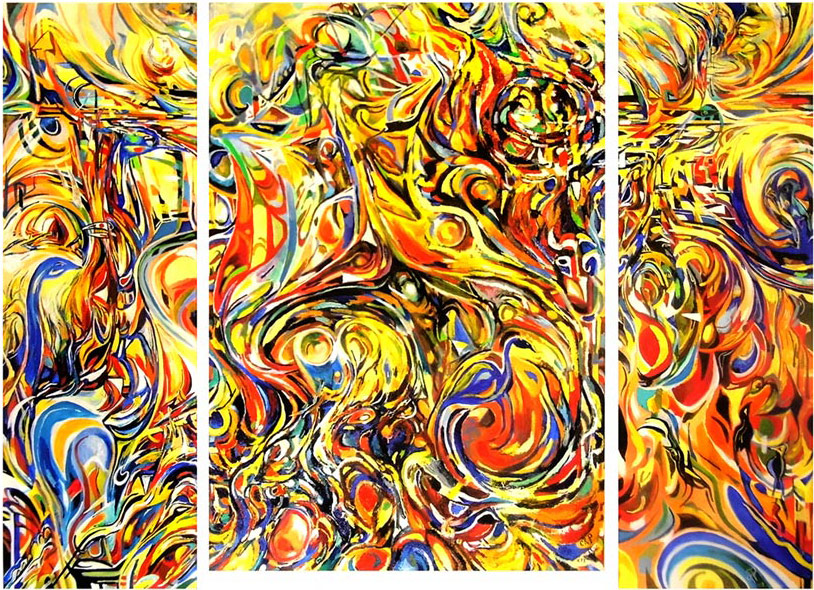“The goal is not to stand still…”
Paul Zimmerman in conversation with Cornelia R. Prawitt
Paul Zimmerman: You are decidedly a figurative artist. How do you select your subjects?
Cornelia R. Prawitt: Over the years I developed various techniques that open up a painting process for me in which the subject crystallizes in the course of my work. Often personal interests also play a role.
PZ: How did you develop interest in art?
CRP: My mother developed a love for art in my early childhood.
PZ: What is the most challenging aspect of your work?
CRP: To finish an artwork.
PZ: What is your artistic process? How do you create your paintings?
CRP: I usually start new works on the side. That means, I am working on a painting which has been started and use the leftover paint to apply undefined colors and shapes to the blank canvas. This process is continued until the point in time is reached when the new painting demands my full attention. Another way to get into the painting process is with primers. They can also bring new aspects to an image. Different painting techniques, applied individually or combined with another, open up new processes. Then the real work begins. It consists in finding and developing the definite in the indefinite. In other words, to recognize and work out what is already hidden. This often requires a long painting process. Another possible approach is to target an area of interest. However, I consciously avoid an overly planned execution. Because the sensed, felt and also spontaneous are more creative in my opinion.

PZ: How do you know when the painting is finished?
CRP: The aim of my work is to create an image unit which harmonies and contrasts are combined in such a way that in the end they form a harmonious whole. This means that the effect of tension and calm in the image must create the desired impression. This is often difficult to achieve, since even one element that is not coherent as a whole can destroy the unity. In addition, the overall effect of the painting must work from close up and from a distance. When this is achieved, the artwork is finished.
PZ: Have your practice changed over time?
CRP: I think the goal is not to stand still, but to continue to develop. However, I remain true to what is proven or important to me.
PZ: How would you describe yourself as an artist?
CRP: Visually, you will not find anything on me that could distinguish me as an artist. So trademarks such as black clothing or the like do not exist with me, at least until now. What distinguishes me as an artist is that I live with my art.
PZ: Which artists influenced you?
CRP: During my studies, the Expressionists played an important role in my own development as a painter. This style fascinates me to this day and continues to influence the colorfulness of my paintings. This strong colorfulness of the Expressionists often corresponds to my color sensation. Works by Emil Nolde, Käthe Kollwitz or Paul Klee, for example, impress me even today by their great expressiveness. Later came the Abstract Expressionism. For a long time, artists like Willem De Kooning, Karel Appel and Walter Stöhrer were important to me. Of course, I was also influenced by the other cultural currents of the time.
PZ: What is art?
CRP: This question is difficult to answer, because in my opinion it means something different for everyone. Since there is no really clear answer, many people don`t know what to think of it. For me, art is everything that is truly independently newly created by human hands.
PZ: How does the pandemic influence your work and sensibility?
CRP: The pandemic is arguably one of the greatest challenges of our time, one that actually affects all of humanity, an extremely difficult and stressful time for many. Completely new problems and fears are also going around the world. However, there are also opportunities to learn from all of this. Of course, the pandemic affects me as much as it does many other artists, because the basics are no longer possible. I find this stressful. Overall, though, I am grateful that I am fine. My artistic work is not directly affected by the pandemic. I processed my incomprehension for some behavior in only one picture. What could still occupy me artistically is the unfathomable question of the meaning of it all.
